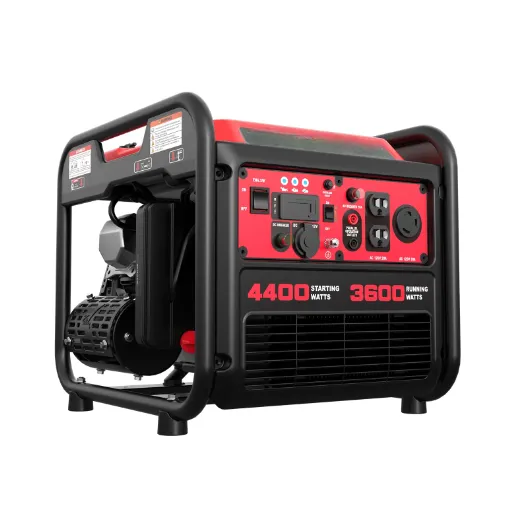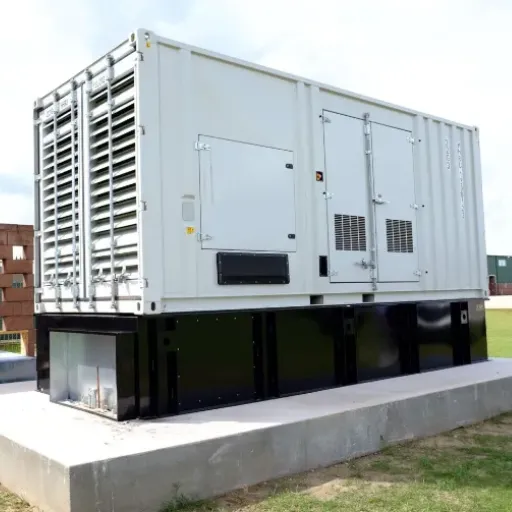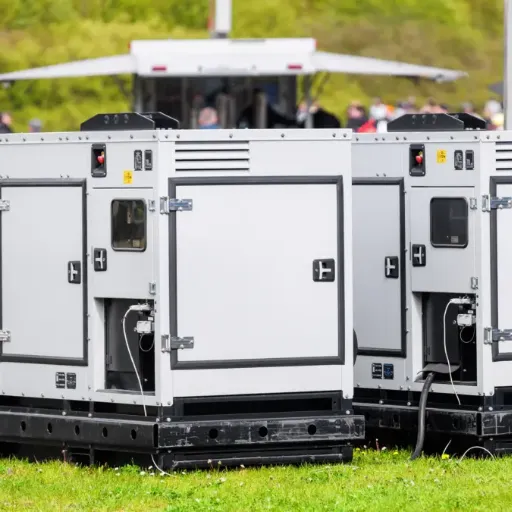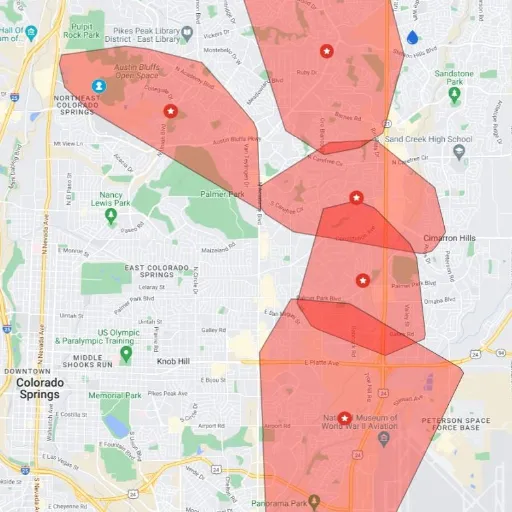Understanding Power Outages in Nebraska
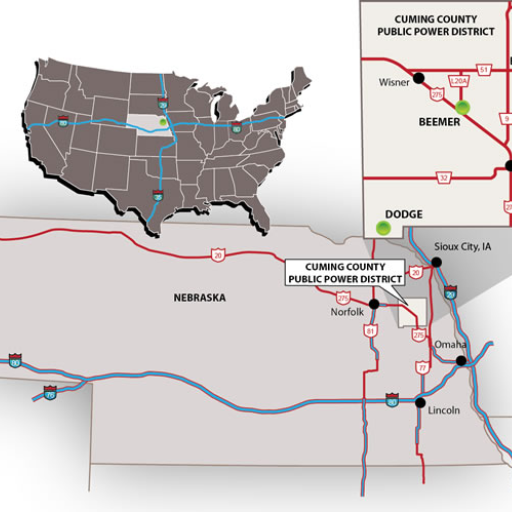
Power outages in Nebraska can occur for several reasons, including thunderstorms, ice storms, or high winds that damage power lines and other infrastructure. Equipment failures or accidents involving utility poles may also cause them. Nebraska utilities swiftly restore power once the damage has been located and the lines have been repaired, while adhering to safety regulations. Residents can stay updated through their local utility providers, while emergency supplies—such as batteries and non-perishable food items—should always be kept handy.
Common Causes of Power Outages
A power outage can be triggered by a multitude of causes. Most of the causes stem from natural, technical, or operational factors. Severe weather ranks high as a leading cause of outages, disrupting America’s power landscape. According to the U.S. Energy Information Administration (EIA) data, storms accounted for about 58% of major outages between 2016 and 2020. Hurricanes, tornadoes, ice storms, and high winds damage power lines, poles, and transformers, thereby preventing the generation and transmission of power across massive areas.
Another reason is tree interference. Trees rubbing against distribution lines in high winds, especially during storms, can cause widespread power outages. Such preventive operations as tree trimming are what solar utilities continue to do, but extreme weather leads to an increase in the problem.
More such outages include technical failures in the grid’s infrastructure. Old equipment may be beyond its working life or just too complex to perform, so it behaves erratically when pushed; overloaded circuits and failure of transmission lines basically cause disruption of regular services. In 2022, equipment failure caused cascading outages that affected more than 100,000 customers in California.
On the other side are human-related incidents, including accidents where cars hit utility poles or forget where they laid shock lines during construction. Furthermore, cybersecurity threats have been on the rise in recent years, such that a cyber-attack upon the power grid could disrupt services for millions. A report by IBM showed that in 2023, critical infrastructure sectors, including energy, accounted for 16% of cyberattacks worldwide in the previous year.
In the end, planned outages or rolling blackouts to maintain parity between supply and demand for energy are also interruptions in service, if and when necessary, in areas with high energy use, such as during heatwaves with intensive air conditioning use.
Understanding these causes underscores the need for investment in grid resiliency, infrastructure development, and community preparedness for unforeseen outages. Residents are encouraged to stay informed about happenings in their area through their local utilities and develop plans to act should an emergency arise.
The Role of Weather in Nebraska Outages
Nebraska experiences outages primarily caused by weather phenomena. The region has experienced a variety of severe weather, which can disrupt the power. The following are five principal weather-related causes of power outages in Nebraska:
Severe Thunderstorms
With their high winds, heavy rain, and lightning, strong thunderstorms can affect power lines and electrical infrastructure. Lightning strikes cause immediate dislocations, whereas wind and falling debris typically cause wider dislocations.
Tornadoes
Situated inside Tornado Alley, Nebraska often suffers from devastating tornadoes that uproot trees, damage power poles, and disrupt substations, thereby triggering widespread power outages.
Ice Storms
A winter ice storm coats power lines and trees with heavy ice, causing them to snap and collapse. The weight of the ice thus causes large-scale outages that persist for long periods.
Heavy Snowfalls
Blizzards and heavy snowfalls can lead to power disruptions by knocking down cables, trees, and other critical infrastructure. These situations are all the more testing due to halts in repair work caused by unsafe travel conditions.
Heatwaves
Excessive heat during the summer months causes power demand surges due to increased air conditioning loads. A grid may stress out and cause outages when equipment overheats or the infrastructure is outdated.
The frequency of occurrence and unpredictability of these events indicate the need to take proactive steps toward making power grids in the area more reliable and weather-resistant.
How Tree Debris Affects Electric Reliability
Some of the extreme weather conditions could be enough to dislodge tree debris, which is one of the leading causes of power outages. Strong winds, heavy rainfall, or icy storms will cause power lines to be either faulted or outright broken when tree branches and trees fall on them. Recent data from utility companies have shown that tree debris and other vegetation-related issues account for nearly 25-30% of power outages in the United States.
The debris weighs down power lines during storms. It sags or snaps power lines, and on occasion, it will damage supporting structures, such as poles or transformers. The plants’ small debris, such as fallen leaves and twigs, clogs drainage systems near utility equipment, increasing flood risks and creating opportunities for electrical malfunctions. Areas where vegetation is dense or not well-maintained near power lines are high-risk ones.
Tree trimming and vegetation management programs can significantly reduce the risk of outages and are therefore best practiced, as documented in a report by the U.S. Department of Energy. Those utilities that aggressively conduct vegetation management saw a 15 percent reduction in outages caused by tree-related debris. That means that constant investment in preventive maintenance and monitoring activities should be pursued to ensure that we do not compromise electric reliability in extreme weather conditions.
Preparing for Potential Power Outages
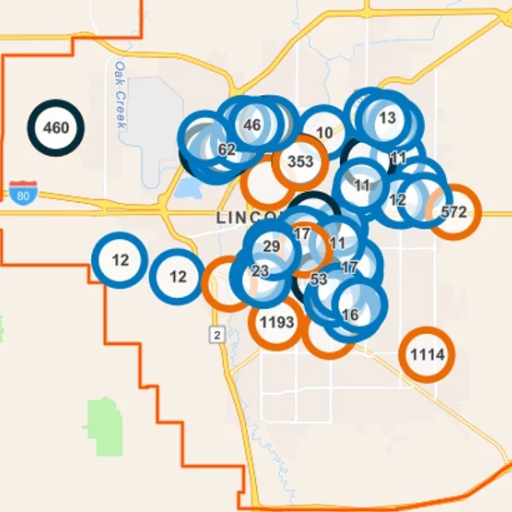
Assemble an emergency kit with flashlights, extra batteries, bottled water, and non-perishable food in case of a power outage. Charge your mobile devices, and consider getting a backup power standby, gentlemen. Keep an eye out for weather reports and local emergency updates. The moment a power outage occurs, immediately unplug delicate electronics so that when they start back up, no damage is caused by a surge in power. Finally, be sure to develop a family emergency plan that includes key contacts and a designated meeting spot, so the whole family knows what to do in case of an emergency.
Steps to Prepare Your Home for Outages
| Key Point | Details |
|---|---|
| Emergency Kit | Include flashlight, batteries, first aid kit, and blankets. |
| Backup Power | Use generators outdoors, 20 feet from windows. |
| Food and Water | Stock non-perishable food and water for at least 2 weeks. |
| Medical Needs | Plan for power-dependent medical devices and refrigerated medicines. |
| Communication | Keep phones charged; have a battery-powered radio. |
| Refrigeration | Keep fridge/freezer doors closed; use coolers with ice if needed. |
| Surge Protection | Unplug electronics to avoid damage from power surges. |
| Heating and Cooling | Use blankets or relocate to cooling/warming centers if necessary. |
| Lighting | Use flashlights, not candles, to prevent fire hazards. |
| Fuel and Vehicles | Keep car fuel tanks at least half full. |
| Stay Informed | Sign up for alerts and weather warnings. |
| Evacuation Plan | Plan routes and have a support network for emergencies. |
| Carbon Monoxide Safety | Install detectors; avoid using stoves or grills indoors. |
| Pet Preparedness | Prepare an emergency kit for pets. |
| Generator Safety | Follow manufacturer guidelines; let it cool before refueling. |
Emergency Kits and Supplies
Having an emergency kit prepared is essential to ensure safety and comfort when power outages or natural disasters strike. Here are Tim’s Critical Items to Include:
Non-Perishable Foods and Water
Set aside at least a three-day supply of non-perishable foods and one gallon of water per person per day. Consider canned food, dried fruits, and energy bars, and be sure to include a manual can opener.
First Aid Kit
A full-fledged first aid kit must comprise adhesive bandages, antiseptics, medical tape, pain relievers, scissors, tweezers, and any prescription drugs one of the family members may need from time to time.
Flashlights and Extra Batteries
Keep several flashlights on hand and have plenty of spare batteries available. Battery-operated or solar-powered lanterns can also be used to extend the amount of time available for lighting.
Multi-Tool or Utility Knife
A multi-tool is ideal for handling small tasks in emergency situations, such as cutting materials and making minor repairs.
Emergency Blankets and Extra Clothing
Emergency thermal blankets and extra layers of clothing can help keep body heat from escaping when it becomes cold, especially during the winter season.
Those are some of the items that play a huge role in managing emergencies well and preparing you and your loved ones better.
Staying Informed with Outage Maps
In the context of emergency utility disruptions, outage maps are crucial assistive tools. They provide real-time information regarding power outages, the supply or disruption of water, or internet to a particular area. Most utility companies have interactive outage maps on their websites, allowing users to check the status of problems, view estimated restoration times, and identify affected areas. These maps typically depict the data in color-coded regions, providing a straightforward visual cue to the severity of the outage.
For instance, customers of major utility providers in the USA, such as PG&E (Pacific Gas and Electric) or Duke Energy, can track outages with extremely detailed mapping systems. Google Search further enriches this experience by collecting information posted across multiple sources, often surfacing links to these maps or displaying key outage information directly in the search results. That is, a simple search for “power outage near me” in Google shows instant updates about outages locally reported by customers or companies.
Informing yourself through such means would ensure that you can plan accordingly, whether by finding alternative resources or simply knowing the length of time for which a disruption will be in effect. The use of outage maps coupled with updates from trustworthy sources like Google Search can go a long way in making emergencies easier to address and more efficient.
Restoration of Power in Nebraska
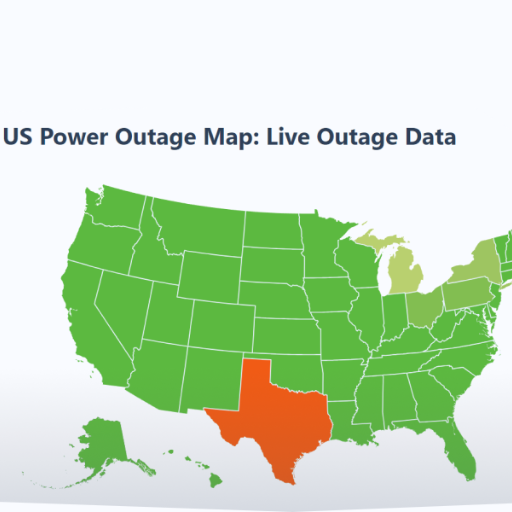
In Nebraska, the restoration of power is primarily dependent on the level of the outage and the particular situation that caused it, which may involve weather conditions, equipment failures, or other disturbances. Utility companies first restore power to critical infrastructure and the areas with the most significant negative impact. From then on, residents are urged to refer to their utility providers for updates about timelines and progress changes. For accurate information, follow updates from a reliable source, such as the utility company’s website or a customer service line.
How Power Companies Restore Electricity
Whenever power is out, a utility company follows set procedures and schedules to safely and efficiently restore electricity to the affected areas. Restoration activities typically begin with assessing the extent of the damage and identifying the cause of the outage. Crews are dispatched to inspect major components, including substations, transformers, and power lines.
There is typically a priority system during restoration. The first thing to be repaired is any issues that arise at critical points of infrastructure, such as power generation plants or substations, as these locations are so important that they affect the highest number of customers at any given time. Once those issues are corrected, repair work shifts toward major distribution lines and feeder circuits that serve neighborhoods and commercial areas. At last, crews repair outages affecting smaller groups or even homes.
The speed and accuracy of restoration efforts have been significantly enhanced by the technologies being adopted by power companies. Thus, innovative grid systems and automated switches help utilities to promptly detect or isolate faults, thereby avoiding a wider outage. It is estimated that in areas implementing advanced grid technology, restoration times are likely to be cut by 30%, easing the inconvenience to customers.
Statistics indicate that the majority of lengthy interruptions are weather-related events, such as storms or hurricanes. For instance, in the U.S., in 2021, an average outage of a residential establishment in that state lasted from the standard 7.8 hours, with major culprits being extreme weather incidents, as reported by the Energy Information Administration (EIA). In an effort to mitigate these risks, utilities carefully implement preventive measures such as tree trimming near power lines, infrastructure upgrades, and other similar initiatives, as well as the adoption of alternative energy sources that may be less disruptive during severe weather conditions.
Keeping communication open with customers is also a critical aspect of restoration. Power companies keep providing updates about restoration through the company website, social media, and automated text or phone calls so citizens stay abreast of the actual progress and anticipated timeline. With advanced communication systems, utilities can keep millions of customers well-informed within a short time during wide-scale outages.
Through advanced technology, strategic planning, and proactive procedures, power companies strive to deliver an enhanced level of excellence in electrical service to all customers.
Using Outage Centers for Assistance
On a few occasions when I need help from an outage center, I make it a point to report the outage through the hotline number, website, or mobile application provided by my utility company. Usually, these centers furnish provisional updates along with estimated restoration times and safety tips so that I stay updated and ready during outages.
When to Call for Help During an Outage
Called the emergency number when these five different situations present themselves during outages:
- Downed Power Lines: If you encounter downed or otherwise damaged power lines, report the situation immediately. Stay at least 30 feet away and warn others to stay away as well, because the lines may still be energized and pose a deadly hazard.
- Power Outage Due to Severe Weather: In the event of an outage resulting from a severe weather event, such as a hurricane or ice storm, please report the outage to your utility company if the situation has not already been acknowledged. Knowing where exactly is affected enables them to prioritize restoration in that area.
- Repeated or Chronic Outages: In the case of repeated outages in your area, notify your utility provider to have the issue addressed and not that it is perhaps a systemic one.
- Medical Emergencies Requiring Power: Homes dependent on medical equipment powered by electricity should contact their utility provider to discuss options or request priority power restoration. If the outage poses an immediate health risk, contact emergency services rather than waiting.
- Unusual Electrical Problems: Flickering lights in the house, burning odors emanating from electrical outlets, or visible damage to electrical equipment are all scenarios that should be reported immediately. They may pose potential fire hazards or defective infrastructure.
Utility companies depend on prompt reporting from customers to operate more effectively and securely during outages.
Staying Safe During a Power Outage
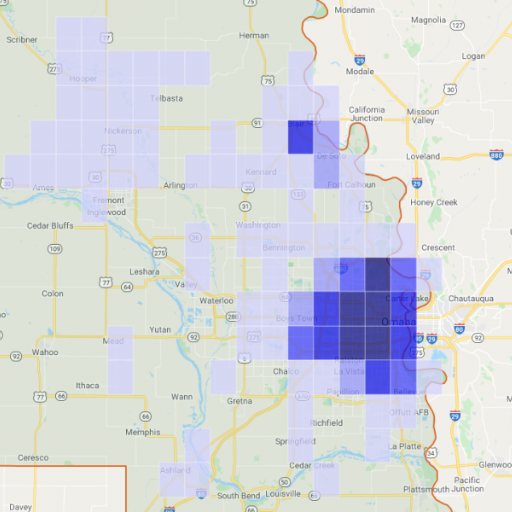
Prepare Need-to-Have Ingredients
Keep flashlights, batteries, canned food, canned water, and an emergency aid kit within reach.
Avoid Flames
Never use an open flame, such as candles. Instead, opt for battery-powered lights to avoid the risk of fires.
Preserve Food
Try to keep refrigerator and freezer doors closed as long as possible to keep the cool temperature inside. After four hours, discard any remaining meat and perishable food.
Stay Safe While Keeping Warm or Cooling
Dress in layers to stay warm or move to a shaded location in great heat. Never use gas stoves or grills indoors to heat because carbon monoxide poisoning could result.
Unplug Electronics
Unplug any electronics not in use during the outage to prevent damage caused by surges when power is restored.
Listen for emergency updates
Keep a battery-operated radio or your phone ready to receive updates from local authorities and safety procedures.
By following these steps, one can minimize risks and stay safe during power outages.
Safety Tips for Handling Power Outages
Prepare a 72-Hour Emergency Kit
The ability to endure a prolonged power outage with a well-stocked emergency kit containing essentials is significantly increased. FEMA suggests that your kit contain some canned/tinned foods, water (one gallon per person per day for at least three days), flashlights, batteries, first-aid supplies, and any other essentials such as medicines.
Invest in Alternative Energy Sources
Backup power generation facilities become valuable in times of extended outages. The U.S. Energy Information Administration (EIA) reports that most portable generators are the choice for homes across the U.S.. Still, these must be used outside and away from windows to avoid poisoning from carbon monoxide. Solar chargers are another environmentally safe option to ensure small devices are powered.
Keep Food from Going Bad
To keep foods safe, the USDA suggests not frequently opening the refrigerator or freezer doors. A full freezer will keep food frozen for about 48 hours, while a refrigerator can maintain a suitable temperature for food storage within a 4-hour window. Check the temperature of your perishable food with a food thermometer to ensure it is kept below 40°F.
Drink Lots of Water and Keep Cool (or Warm)
Health risks are involved with extreme temperatures during power outages. During such conditions, it is recommended to drink bottled water, wear light clothing, and stay shaded to protect yourself from the extreme heat. During cold weather power failure, blankets and layers of clothing should be used to keep the body warm. Never use propane stoves, outdoor heaters, or grills indoors, as these devices may emit unsafe levels of carbon monoxide.
Prepare for Medical and Communication Needs
If you require life support medical equipment that requires electricity, such as oxygen concentrators, contact your power company in advance to register them in the medical priority program. Also, ensure that mobile phones and power banks are fully charged before an outage occurs. Communication is critical; having fully charged devices allows for emergency calls or contacting a loved one.
Therefore, taking the above recommendations, backed with valuable data and references, will significantly improve one’s preparedness and safety during a power outage.
Managing Food and Water Supplies
In any way you look at it, proper management of food and water during a power outage spells the difference between survival and sustenance. Here are five lifesaving tips that will enable you to prepare:
- Stock Non-Perishable Foods: A wide variety of non-perishable foods should be stocked, including canned goods, dried fruits, pasta, and rice. Prevent an emergency shortage by storing at least a 3-day supply per person. Emergency preparedness organizations suggest that, ideally, a person should have approximately 2,000 calories per day during an emergency period.
- Store Emergency Water Supplies: Store at least one gallon of water per person per day for drinking and sanitation, as recommended by FEMA. A minimum of 3 days is needed, with additional days for those with special needs or for pets.
- Manual Can Openers Should be Available: Include a manual can opener in your supply kit to access canned foods if the outage shuts down your electric appliances. This simple tool will allow you to use your stored supplies without hassle.
- Avoid stockpiling perishable items before the outage: Refrain from overstocking fresh produce or refrigerated items, as the power outage may cause them to spoil quickly, especially without proper refrigeration. Freeze extra ice packs beforehand to help keep temperatures in the freezer and refrigerator for a longer time.
- Allow Insulated Coolers to Preserve Food: Use insulated coolers and fill them with ice or frozen gel packs to keep food cool for an extended period. Research indicates that maintaining food temperatures at or below 40°F significantly reduces the risk of foodborne illnesses.
These practical steps will help ensure that food and water supplies are adequately on hand, allowing the household to successfully navigate a power outage.
Using Generators Safely
During a power outage, generator safety measures should be the top priority. Although generators can save lives, they pose numerous dangers if not used properly, including death by carbon monoxide poisoning, electrical shocks, or fire. Here are five main points to keep in mind for safe generator operation:
- Operate Generators Outdoors: Generators should be operated continuously outdoors in a well-ventilated area, at least 20 feet away from any window, door, or vent. The CDC states that with carbon monoxide poisoning, over 400 Indians die every year, many of whom are from improper generator use.
- Fit Carbon Monoxide Detectors: Use carbon monoxide detectors in your home that will alert you if dangerous gas levels are detected. Ensure they have fresh batteries and are operating correctly.
- Avoid Generator from Being Wet: Place the generator in a dry area; do not allow any moisture to come into contact with it to avoid electrocution. The generator should not be used in wet conditions or during rainfall unless it is under a shelter or canopy.
- No Power Backfeeding: It is illegal to backfeed into your residential wiring through a direct connection from your generator unless a licensed contractor has installed a transfer switch. It creates an electrocution hazard for utility workers and could damage your generator.
- Store Fuel Properly: Store fuel in a safe, properly labeled, and vented container. Keep it away from living spaces, ignition sources, and children. Prevent fire hazards by refueling the generator only when it is cool.
By following these safety tips, you will minimize any risks and set the stage for efficient generator use during power outages.
References
- Power Outage Impact on Campus – Core.ac.uk – The Cost of a Power Outage to Campus: This document discusses the academic and operational impacts of power outages, including specific cases in Nebraska.
- University of Nebraska Budget and Infrastructure – Project MUSE – Nebraska: This article offers insights into the University of Nebraska’s budget challenges, which may include infrastructure issues such as power outages.
- Nebraska Power and Academic Contributions – Core.ac.uk – NEBRASKA: This source includes discussions on Nebraska’s power systems and their implications for academic and industry contributors.
Frequently Asked Questions (FAQ)
To prepare for a Nebraska power outage, pack an emergency kit with a flashlight, batteries, non-perishable food, and water. Also, keep your mobile devices charged and download the OPPD app for real-time outage updates. Additionally, have a battery-operated radio to stay updated on the situation as the weather worsens.
During an outage, stay calm and check out your surroundings. If there is an outage affecting you, check the OPPD site or app for the current outage map in the field. Please report the blackout if it is not already indicated; avoid opening the refrigerator to prevent food spoilage.
You can report an outage to OPPD through either the customer service telephone number or directly from the OPPD website. Additionally, the use of the OPPD app makes it convenient to report outages and receive updates on restoration efforts directly from your mobile device.
The restoration of power following an outage depends on the severity of the situation and the extent of damage to equipment. The OPPD crews go to work without delay, with the goal of restoring power as quickly as possible. The OPPD outage map can be consulted to determine the restoration time, or at least an estimate, and the work being done in your area.
OPPD keeps customers updated via its website, social media outlets, and the OPPD app. Customers can also view current outages on the Power Outage Map, which provides a quick overview of where power outages exist in OPPD’s service territory, which spans approximately seventy-five counties.
Downed power lines should be reported immediately to OPPD. Stay at least 30 feet away from downed lines-they pose a significant danger. Don’t try to move or touch the lines, and inform anyone in the area about the hazard.
Download the OPPD app from the app store on your device. Upon installation, enter your information to obtain real-time updates and notifications on outages, restoration efforts, and other important information affecting your electric service.
If your neighbors have power but you do not, check your circuit breakers or fuses to see if the issue is inside your home. If everything seems fine there, please call OPPD and inform them of the situation so that it can be addressed.



